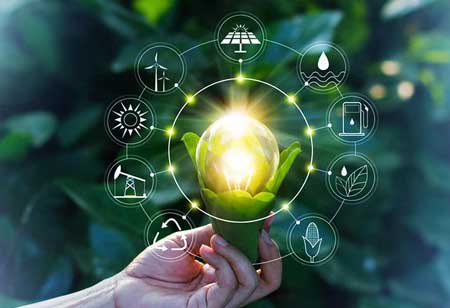Thank you for Subscribing to Energy Business Review Weekly Brief
The Future of Power
In its never-ending struggle to improve its standard of living, the human race has invariably relied on enormous amounts of electric power to incite our evolution.

By
Energy Business Review | Monday, November 21, 2022
Stay ahead of the industry with exclusive feature stories on the top companies, expert insights and the latest news delivered straight to your inbox. Subscribe today.
Solar energy, Atomic energy, and energy from wind and biofuels are promising replacements for a cleaner and greener future.
Fremont, CA: In its never-ending struggle to improve its standard of living, the human race has invariably relied on enormous amounts of electric power to incite our evolution. Today, most of this immense requirement is addressed by burning fossil fuels.
Fossil fuels have effectively fed our energy needs, but they are also non-renewable and swiftly depleting. These fuel origins have also contributed considerably to greenhouse gas emissions and pollution. The time has come to seek suitable and better substitutes for fossil fuels.
Scientists are continuously researching fresher and greener sources of energy that have a limited environmental impact and decrease their contribution to global warming, which is considered to be caused by the discharge of carbon dioxide while burning fossil fuels.Solar energy, Atomic energy, and energy from wind and biofuels are promising alternatives for a cleaner and greener future.
Fossil Fuels – Coal
Fossil fuels are the corpse of dead plants and animals on the ground and in the seabed. These originated from the fossilized residues of dead animals and plants open to heat and pressure in the Earth's core for hundreds of millions of years.
Fossil fuels primarily consist of hydrocarbons. They possess carbon and hydrogen in varying ratios, such as methane, which has a low carbon-to-hydrogen ratio, or anthracite coal, which is nearly pure carbon.
Hydrocarbons are created when the fossilized residues of dead organisms are chemically changed over hundreds of millions of years by great pressure and heat found in the Earth's crust. These fuels' chemical energy 'stored' is released during ignition to produce electric power.
Wind Energy
Wind farms are constructed to gain mechanical energy from the wind and change it into electrical energy. These wind farms are then linked to electrical power transmission networks to distribute power. However, on average, only 20 to 40% of the total energy capacity of a wind plant can be used.
The limiting factor in exploiting energy from wind is that wind speed is variable. In most cases, wind energy can only be harnessed with high speed and consistent heavy winds. These usually occur at higher altitudes. Wind energy also needs large, open expanses of land to construct wind farms.
Biofuels and Biomass
These encompass fuel from plant and animal sources. For example, oil, or ethanol, obtained from plants like sugarcane, switchgrass, algae, poplar, and corn, can be utilized directly or blended with other fuels, like commercial diesel and gasoline, to give power.
In addition, plant matter, like dead wood and leaves, branches, and wood chips, can be burnt to generate energy. This is generally classified as biomass. Biomass also involves any biodegradable waste from plant and animal sources that can be burnt for fuel.
The limiting factor in biofuels is that many crops must be grown to harvest the energy caught in plants. This requires vast areas of fertile land. Also, not all plant sources offer a high yield. Therefore, experiments are underway to hybridize and genetically modify these crops to make them stronger and increase their yield. Nevertheless, biofuels are very encouraging for small-scale use as they are low on greenhouse gas emissions, are a powerful waste management system, and produce few air pollutants.
With the advancement of new technology and new insights into our surroundings, scientists have come up with even more adventurous power options. These incorporate fuel cells, geothermal energy, tidal and wave energy, and others.
Fuel Cells
Fuel cells are the same as batteries but employ reactants from an external source instead of self-contained batteries. If fuel cells' fuel and oxidant levels are properly maintained, power can be produced almost continuously. The efficiency of fuel cells is relative to the power being drawn from them. They are also lightweight and highly reliable.
Geothermal Energy
The interior of the Earth comprises a lot of heat. Shallow regions hold hot water, rock and steam. Deeper inside, the magma is extremely hot. This heat can be dominated to produce electrical energy and drive different applications.
Harnessing geothermal energy needs no fuel and minimal land. It is a relatively cheap and sustainable energy source since the amount of heat in the Earth's bed is so large that even if we harness more energy than we need, it will still suffice for millions of years.
Oceanic Energy
The vast oceans contain huge amounts of energy and thermal and salinity gradients in the water currents. Therefore, the power from tides and waves can be achieved to generate electrical energy. In addition, the differences in temperature that occur with different depths can be used to drive heat engines, producing electric power.
Electrical energy can also be produced using the osmotic pressure difference between saltwater and freshwater. Although most of these methods are still experimental, they can be a breakthrough for mankind if researched properly. Oceans may well be able to satisfy our energy needs and win the title of king of fuels.






